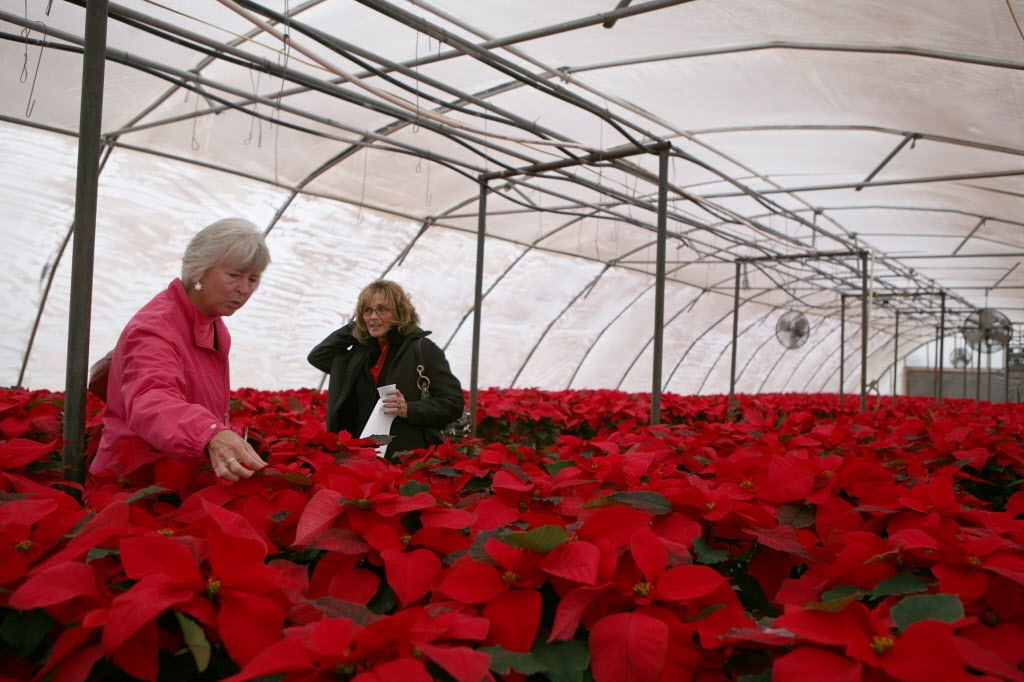Poinsettias thrive on bright natural daylight: at least six hours daily is recommended. Placement near a sunny window is ideal, but avoid locations where hot afternoon sun may shine directly on, and fade colorful bracts.
To prolong the bright red of the bracts, temperatures ideally should not exceed 70 degrees during the day, or fall below 65 degrees at night. Avoid placing poinsettias near drafts, fluctuating air currents, excess heat and dry air from appliances, fireplaces or ventilating ducts. Poinsettias are sensitive to cold temperatures and outside placement during the winter months is not recommended when temperatures are below 55 degrees Leaf drop will occur if poinsettias are exposed to temperatures below 50 degrees
Poinsettias do best with moist soil so water when the soil surface feels dry to the touch. Like other container plants, the best indication of a thorough watering is water begins to seep through the drain holes at the bottom of the pot. Don't leave them sitting in water or they may suffer from root rot. It is not necessary to fertilize your poinsettias during the holiday season, however, beyond the holidays you should apply a balanced, all-purpose household plant fertilizer to promote new growth.
Poinsettias can be grown year round for lush green foliage.
March or April: When the bracts age and turn to a muddy green, cut the stems back to about eight inches in height. After you cut the plant back, it will probably look rather stark, with bare branches and bluntly cut woody stems.
By the end of May, you should see new growth. Keep the plants near a sunny window.
Around July 4: Cut branches back again about half their length to encourage bushy plants. You may place your poinsettias outdoors in indirect sun when night temperatures are warmer. Continue to water the plants regularly during the growing period. Fertilize every two to three weeks throughout the spring, summer and fall months with a complete, indoor plant fertilizer.
The poinsettia is a plant that requires a long period of darkness and is termed a "short day" (long night) plant. Short-day plants form flowers only when day length is less than about 12 hours. Many spring and fall flowering plants are short day plants, including chrysanthemums, poinsettias and Christmas cactus. If these are exposed to more than 12 hours of light per day, bloom formation does not occur.
November or December: Poinsettias will naturally bloom depending upon the flowering response time of the particular cultivar. This can be tricky to do outside of a controlled greenhouse environment, because any stray artificial light could delay or halt the flowering of the plants.
To make this work, the plants must be kept in complete darkness for 14 continuous hours each night beginning Oct. 1. This can be done by moving the plants to a dark room, or placing a large box over them. During this period, the plants require six to eight hours of bright sunlight and night temperatures between 60 and 70 degrees. This regimen must continue for about eight to 10 weeks for the plants to develop colorful bracts for the holiday season.
If this seems like too much effort, you can always support the horticulture industry by purchasing another poinsettia.
Peter L. Warren is the urban horticulture agent for the Pima County Cooperative Extension and the University of Arizona. Questions may be emailed to tucsongardensage@gmail.com




